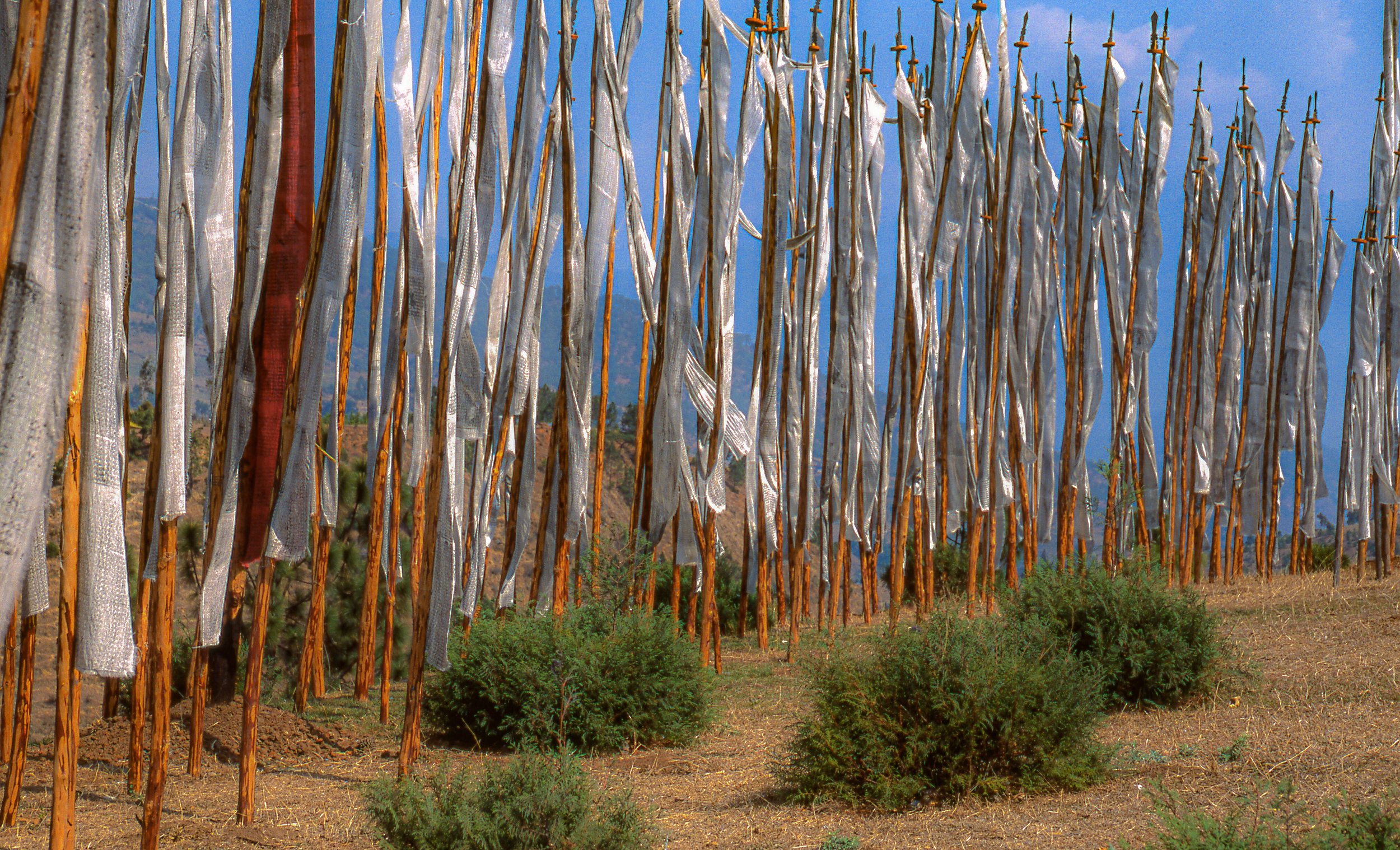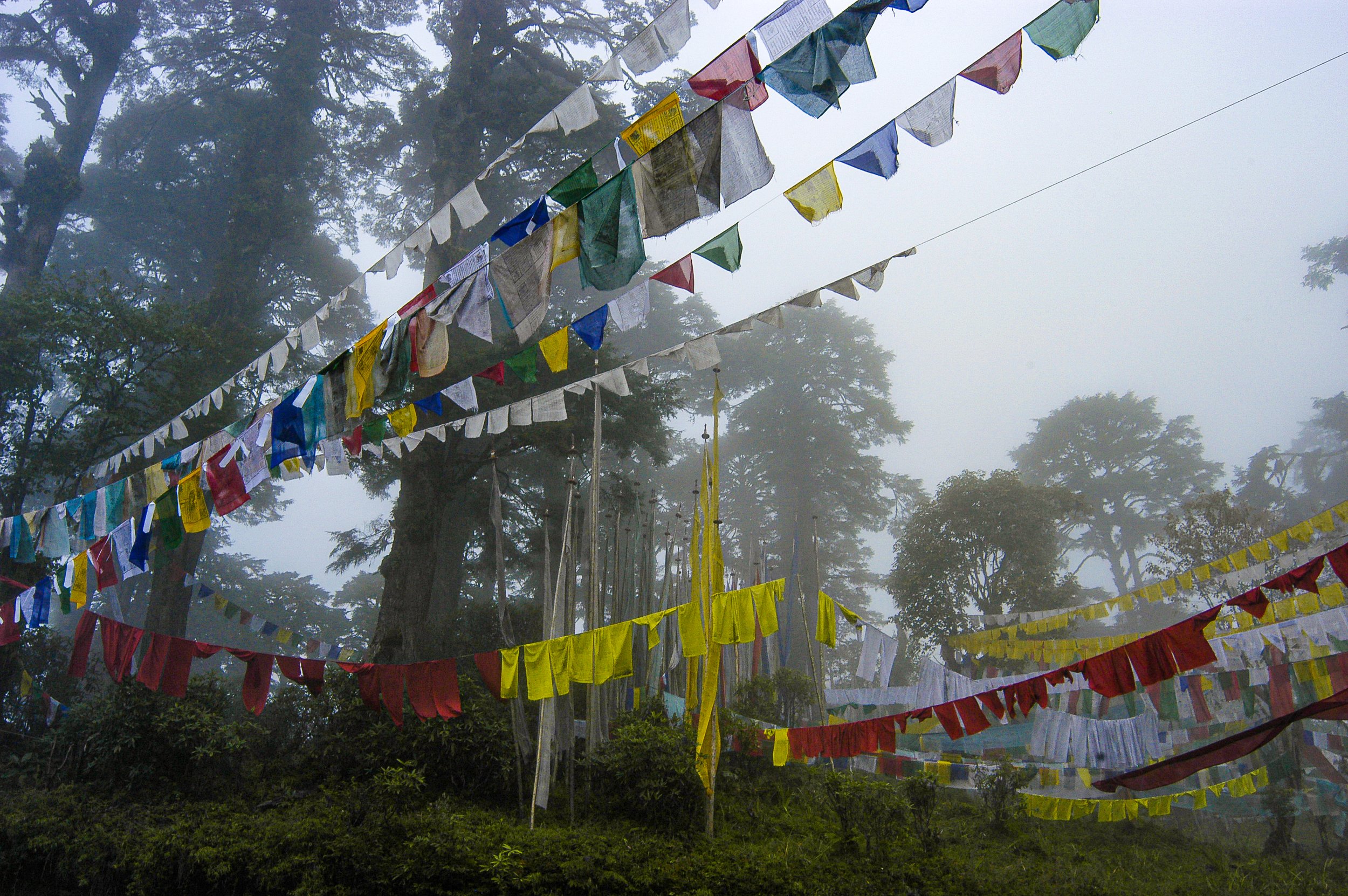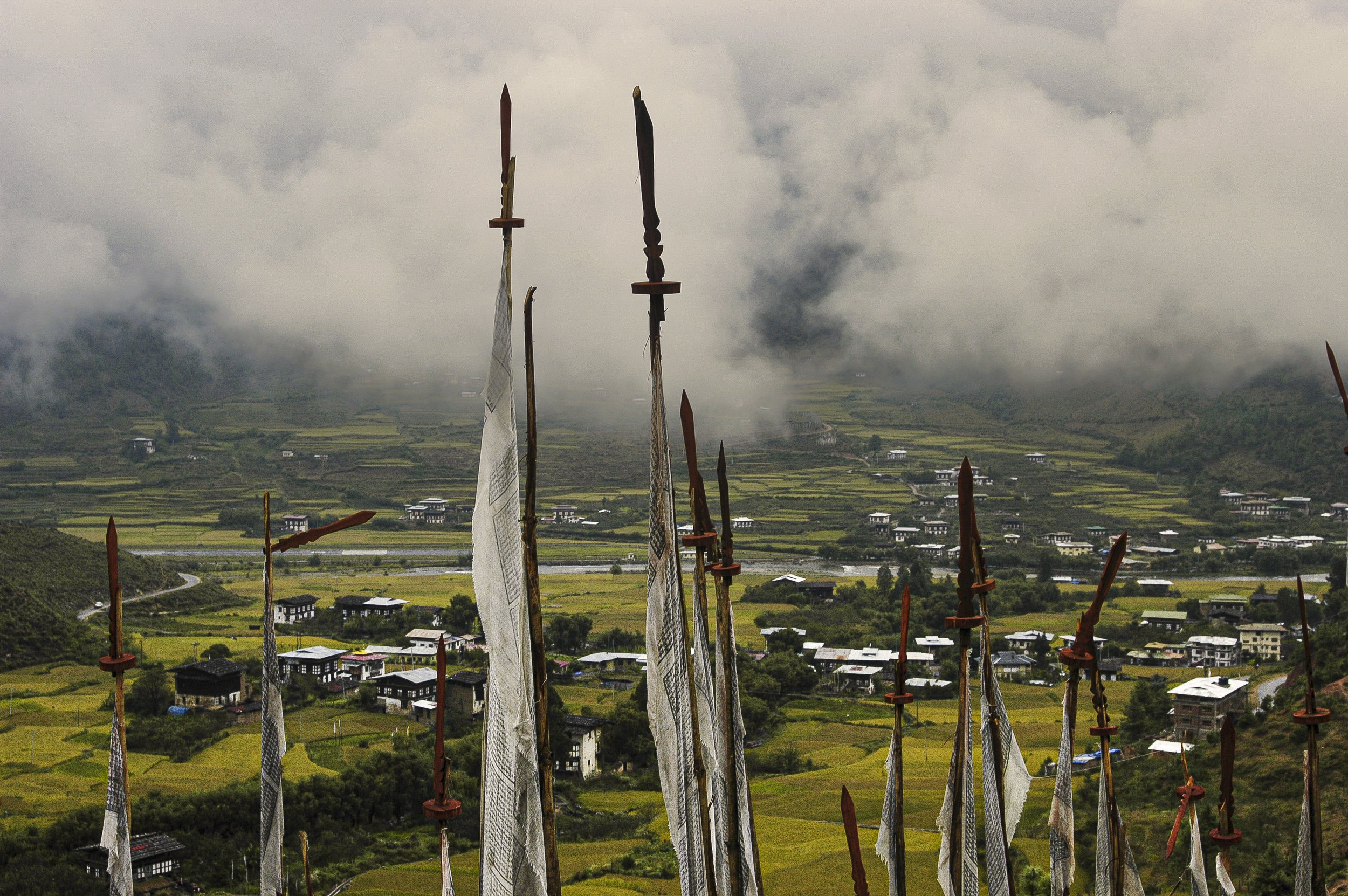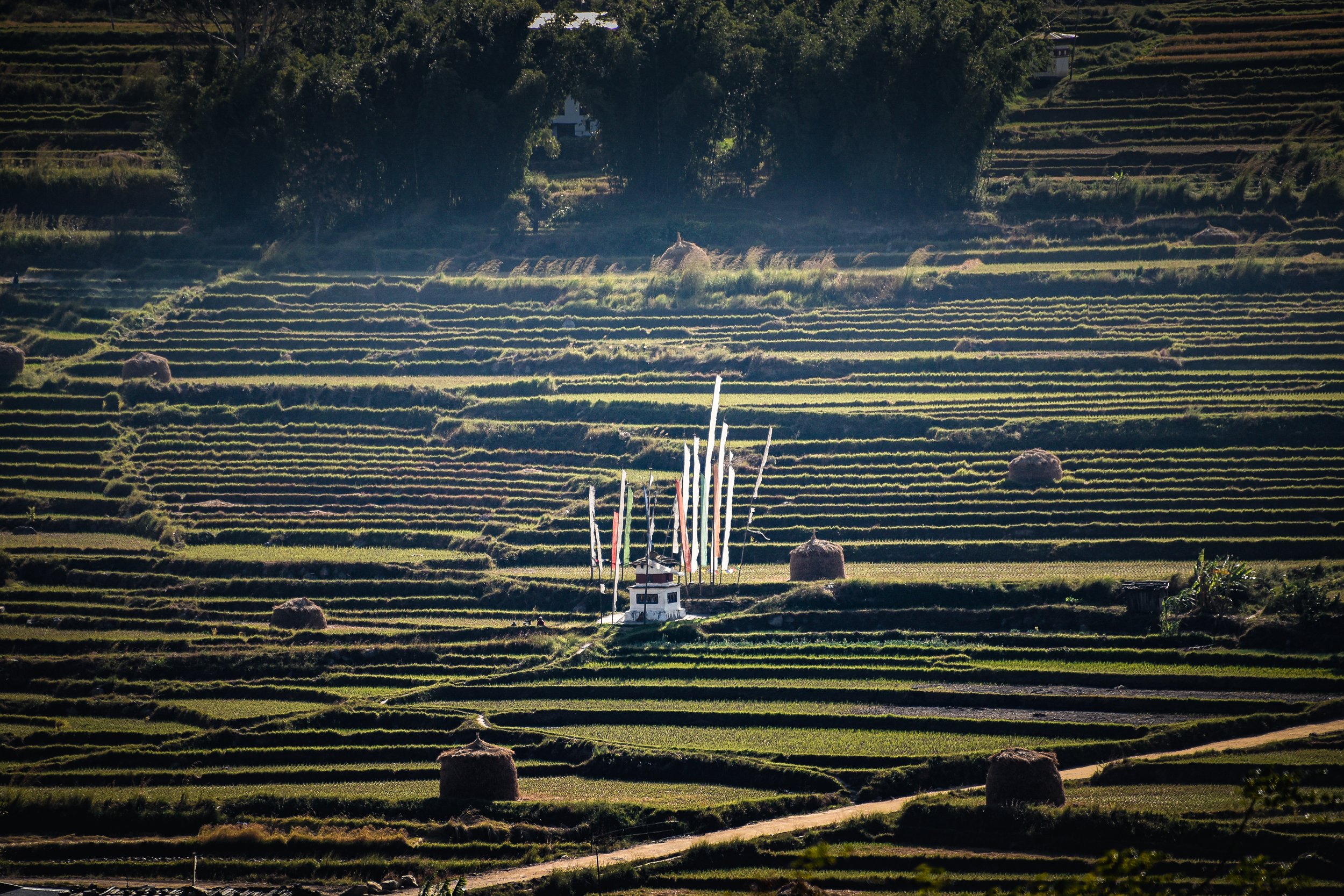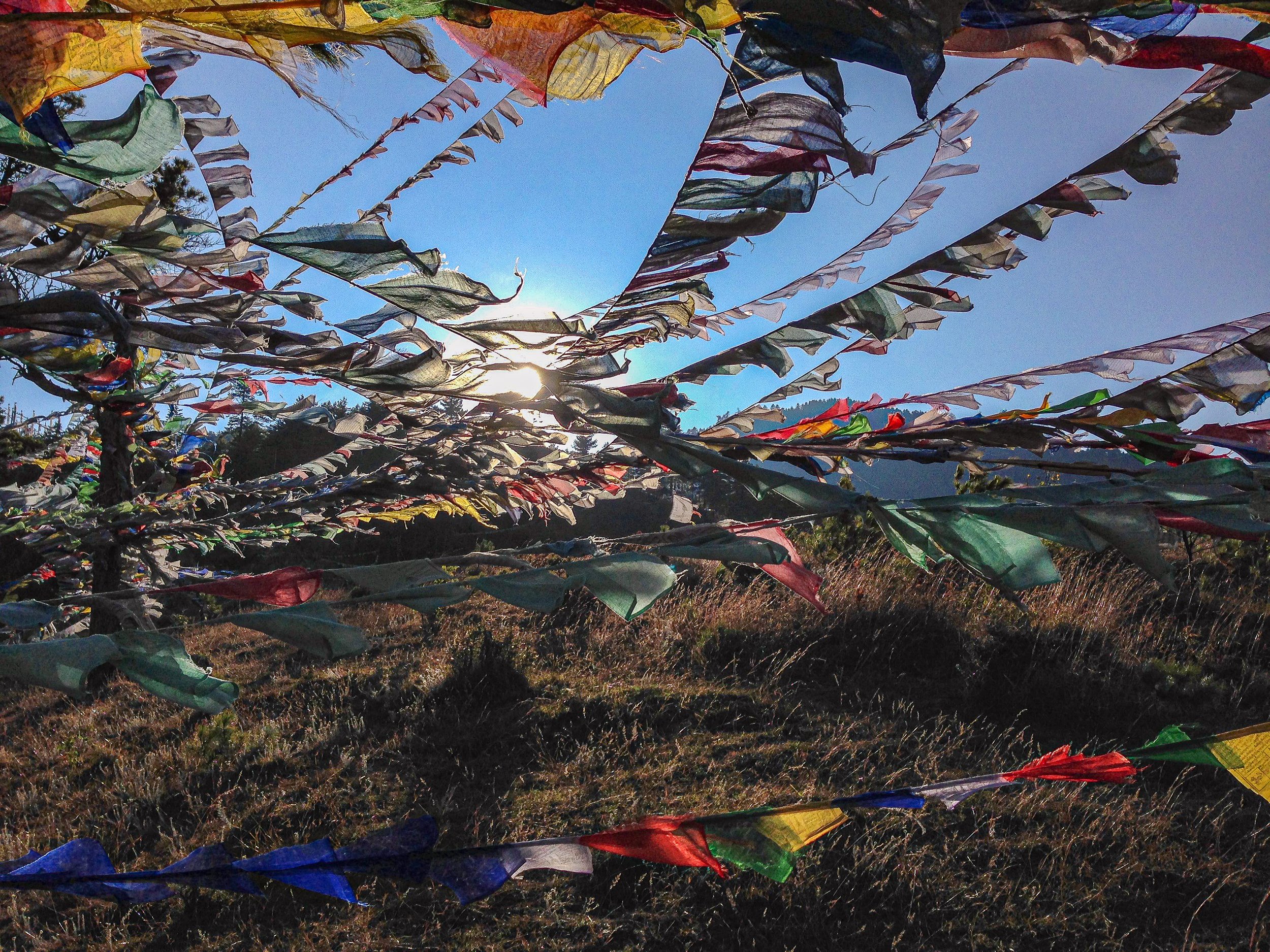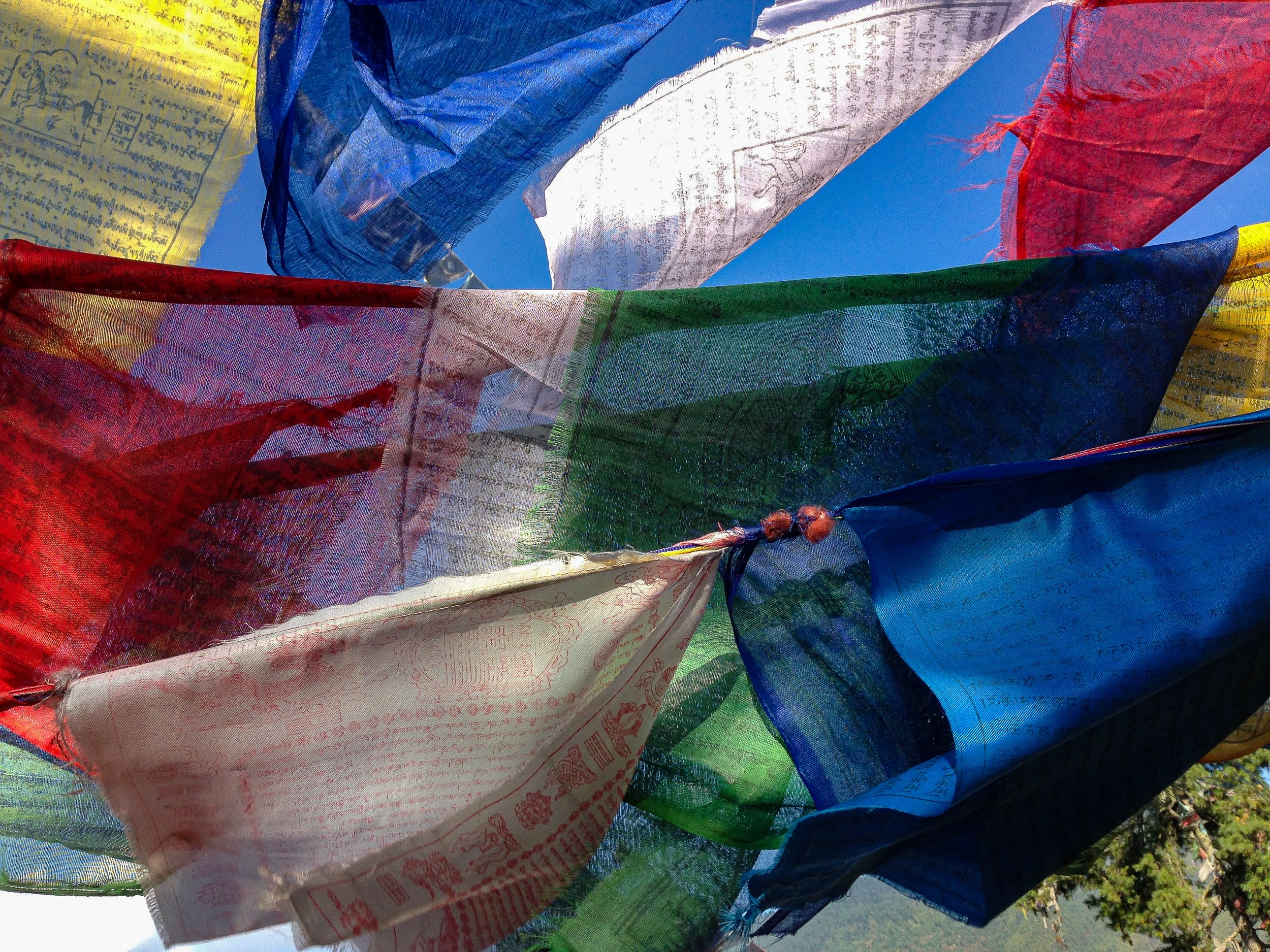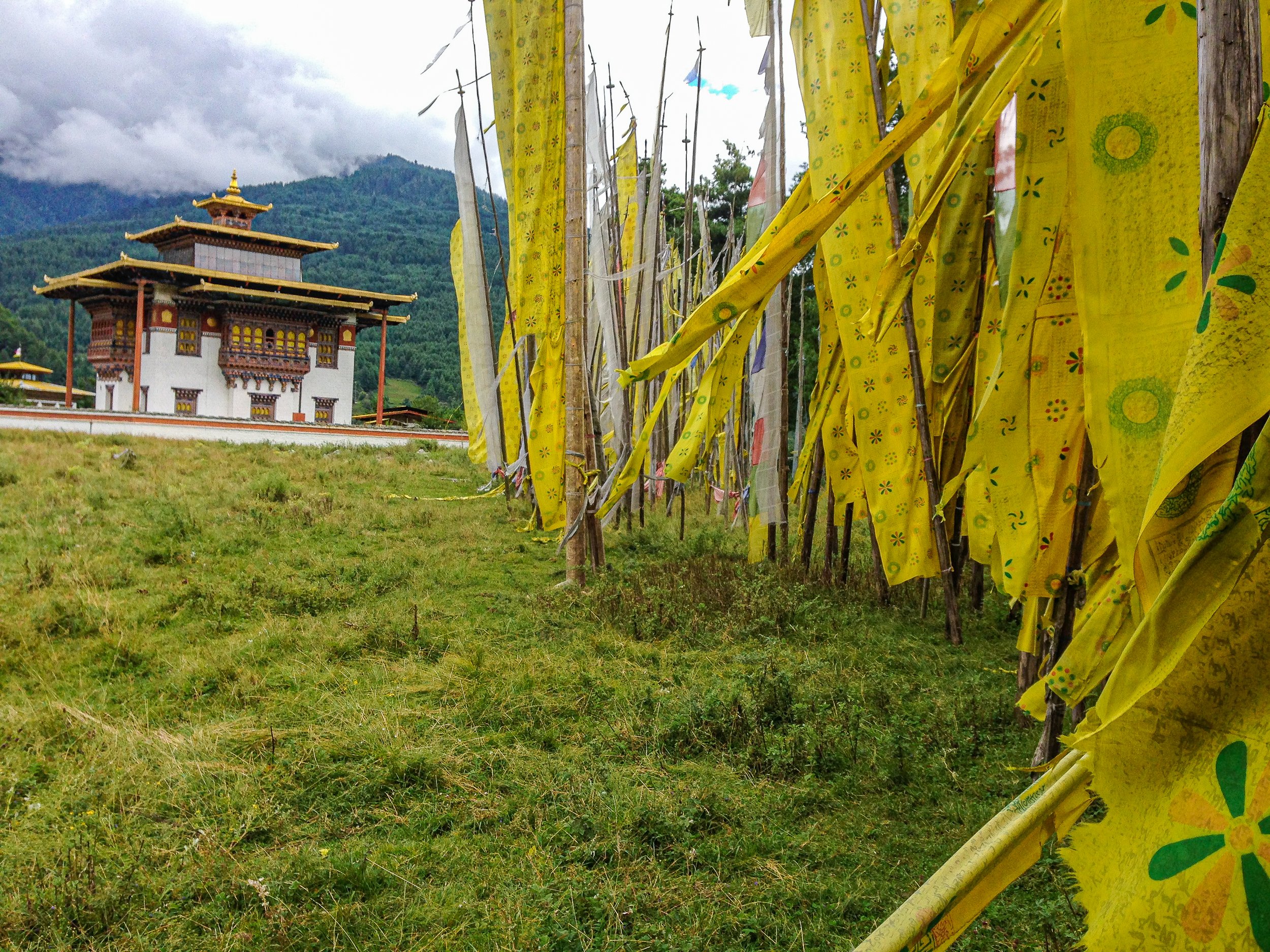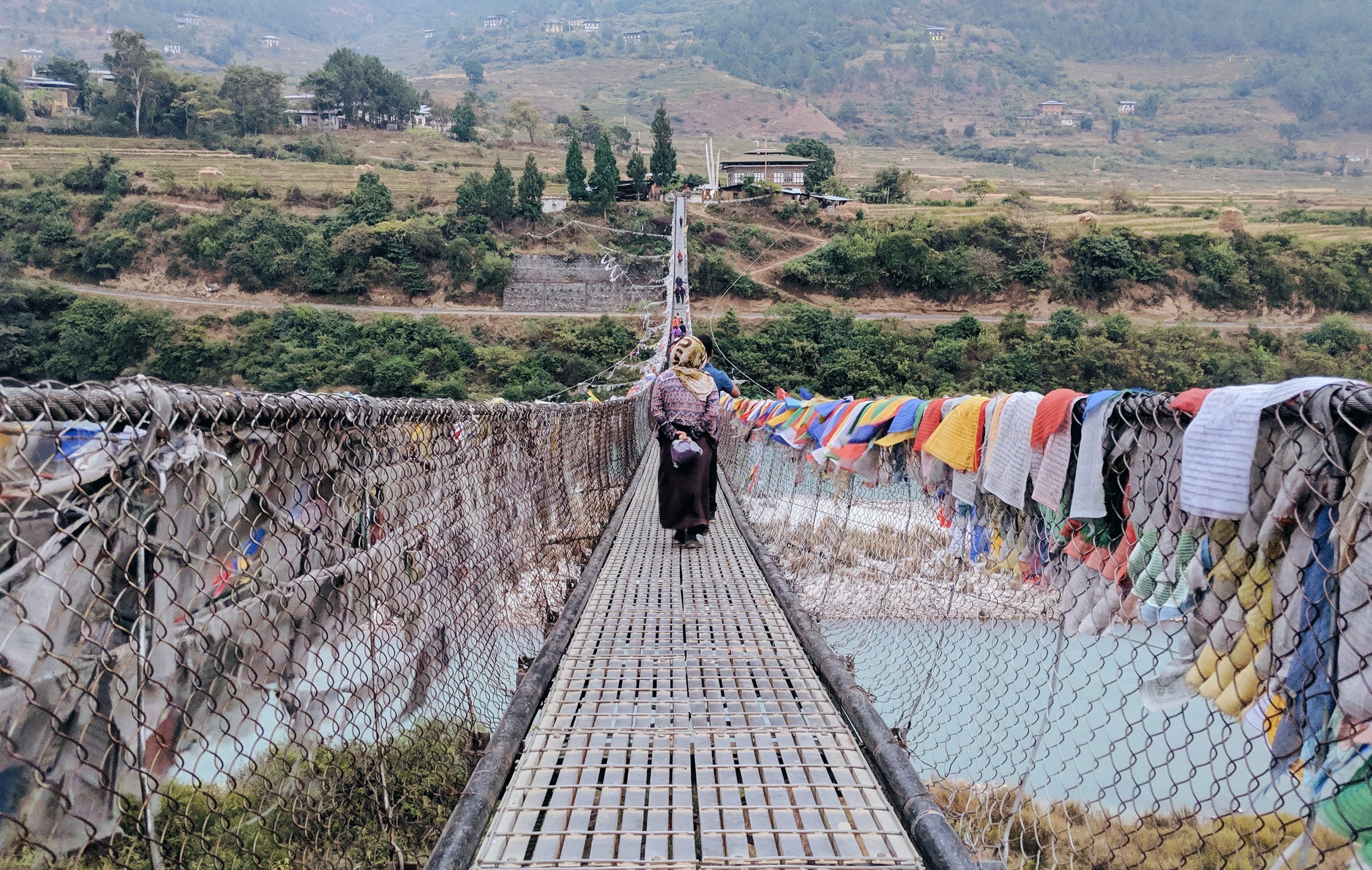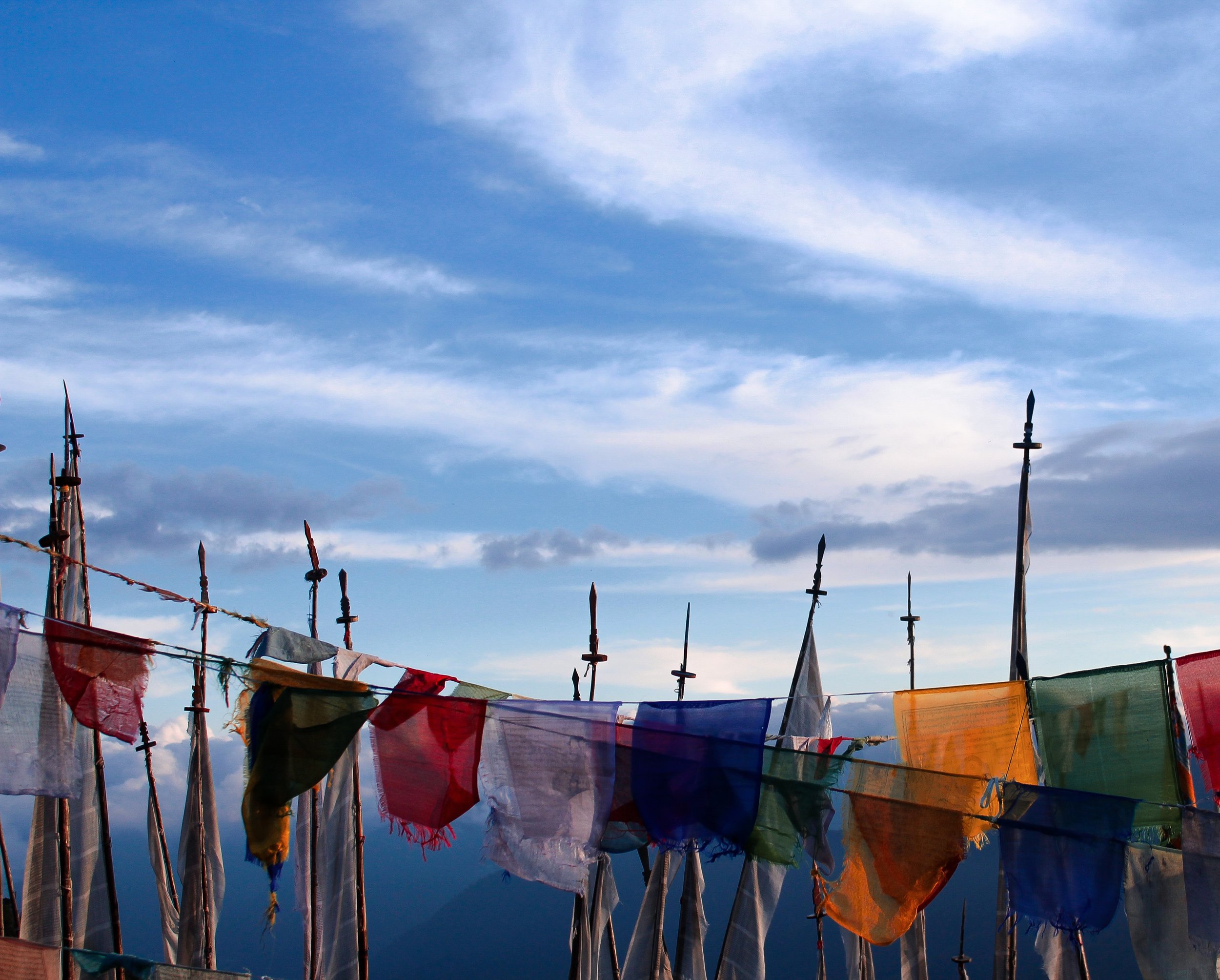ON A FLAG AND A PRAYER
Wherever you go in Bhutan, it is impossible not to see prayer flags. You see them on the roof of houses, you can see them in the streets and you can spot a row of prayer flags in a valley, a mountain pass or a bridge over a river. The principle is always the same, a meeting of wind and prayers who then travel together.
While it is very common to see strings of small, square prayer flags hung between trees or houses. You often can see both kinds of prayer flags together in the same place. Prayer flags were introduced in Tibet from India apparently and then on to Bhutan and Nepal. They have been an important part of Bhutanese tradition for centuries and they can be mounted for several reasons. Often for happiness and longevity, luck or prosperity. In Bhutan, brightly colored prayer flags are very common. They come in blue, red, green, yellow and white, representing sky, fire, water, earth, and air, respectively. The colored flags also stand for the five wisdoms of Buddhism, the five directions, the five meditation Buddhas, and the five emotions.
The flags are inscribed with auspicious and sacred emblems, symbols or mantras. Each type of prayer flag carries its own significance and blessings. Not only the person who mount the flag will receive good karma but everyone will benefit from the blessings as they are carried by wind or water. Traditional Bhutanese white prayer flags are also vertical, mounted on a pole. The wooden pole has a redi, representing a traditional knife, on top. The vertical flags often come in groups of tens closely standing next to the other. In a way I prefer them to strings of colored flags, they look more serene, reaching for the sky, as if sending a message. The fluttering of the flags in the wind makes for a simple, yet impressive sound.
When I guided groups across Bhutan, Nepal or Tibet, I made a point of spending a morning with a local family who made a living of block-printing flags using traditional techniques from centuries ago and we would then take our home-made flags on a hike to the top of a hill and string a whole length of flags together, taking time to thank Buddha for our own personal reasons, in silence. The fluttering flags invoked, in some weird way, a peaceful sense of calmness.
It reminded us of why we travel.
LITTLE KNOWN FACT:
Faded flags are a good sign. It means the prayers have been carried by the wind. The more faded the flag, the more prayers that have been spread.
BEST MONTHS TO VISIT
The best weather is in the fall season from September to early November but I also like spring time (April/May) when the trees and flowers of this garden city are green and in full bloom. We try to avoid winter months (January till early April) due to road conditions and snow in the passes.
During the Covid pandemic, Bhutan has shut its borders to international visitors and may re-open by May or June 2022 to vaccinated travellers without quarantine.


